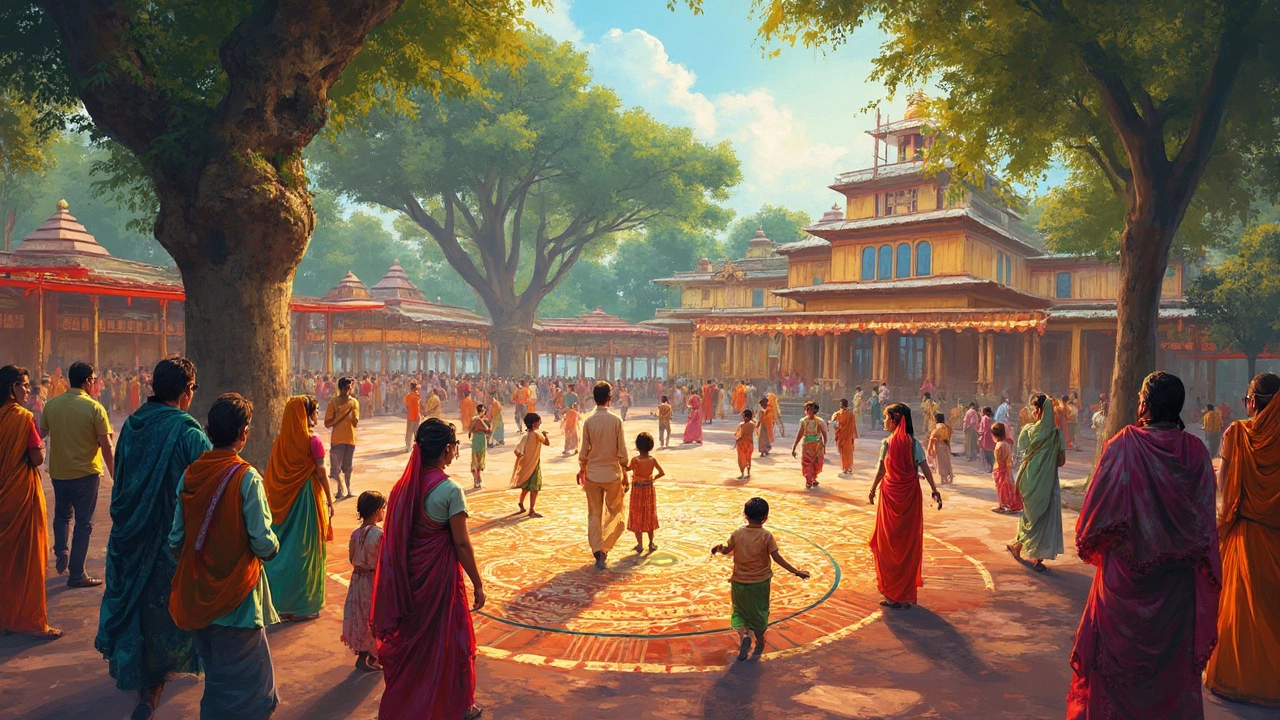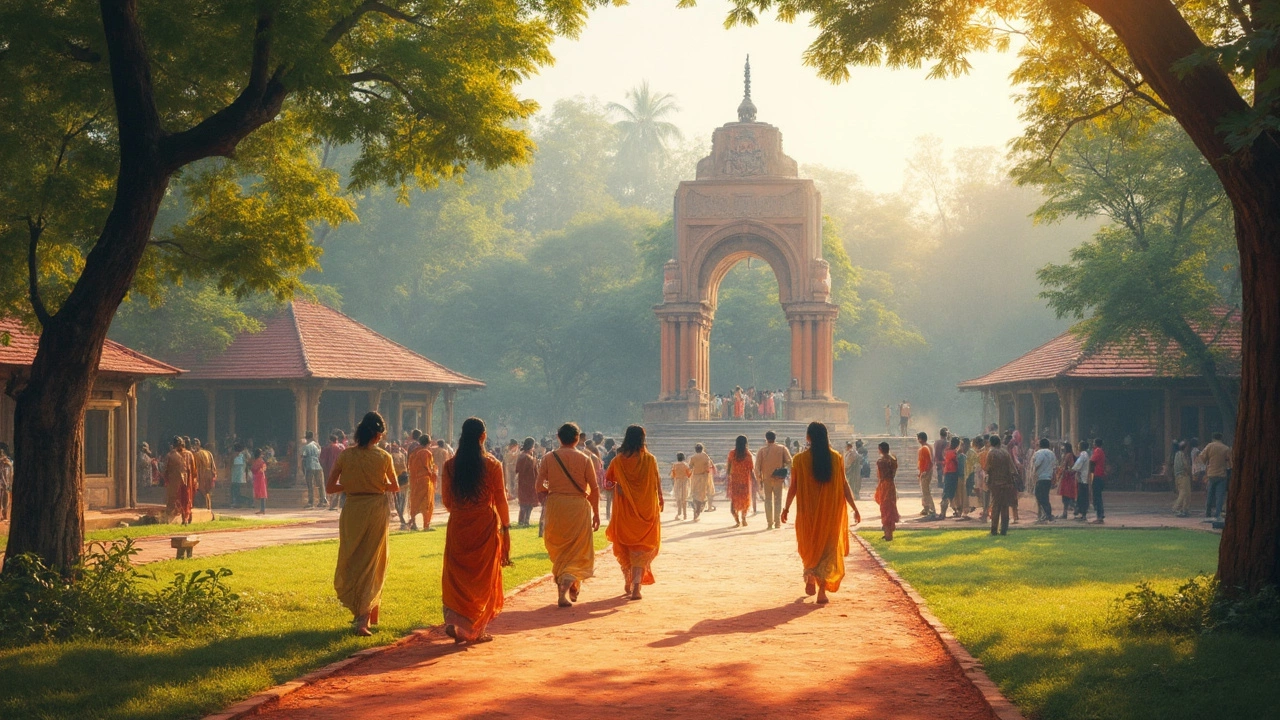People keep asking: Is Shantiniketan finally a World Heritage Site? There’s a good reason for all the buzz. Not every spot with a big history claim gets the UNESCO badge, so finding out if Shantiniketan made the list is more than just trivia – it changes how people see it.
Shantiniketan isn’t just another Indian town. This place has deep ties to Rabindranath Tagore, the Nobel Prize winner who practically reinvented education here. It's famous for its forests, open-air classes, and that vibe you just don’t get anywhere else. But heritage status? That’s a different level altogether.
If you're planning a visit, hoping to impress your history-loving friend, or just curious about what sets this spot apart – you need the latest info, not the rumors. Ready to get the answers and some solid tips for making the most of your trip? You’re in the right place.
- What Makes Shantiniketan Unique?
- UNESCO World Heritage Status: The Real Answer
- Must-Know Facts and Stories
- Tips for Visiting Shantiniketan
What Makes Shantiniketan Unique?
If you've ever heard of Shantiniketan, you probably know it’s not your typical town—or even your typical university. It was set up in 1901 by Rabindranath Tagore, who went way beyond regular classroom learning. His vision was simple: teach in the middle of nature, skip the walls, and let curiosity lead the way. That’s what started Visva-Bharati University—now a household name across India for its offbeat style.
Students here don’t just bury their heads in textbooks. You’ll spot classes happening under giant trees, kids learning art with mud between their fingers, and people from all over the world mixing together. Tagore’s big idea was that education should be creative, open, and friendly to nature. No wonder the place stands out.
What else? Shantiniketan is famous for its festivals. Take Poush Mela—it’s this huge fair every December where you get music, handicrafts, and food stalls everywhere you look. People from other states dive in just for this. The Basanta Utsav or Spring Festival is even bigger: students celebrate Holi here with songs, dance, and a crazy burst of color. It's like Holi, but with a Bengali twist and loads of cultural performances.
The locals keep a balance between tradition and new ideas. You'll see ancient rituals sitting side by side with modern art galleries and music gigs. The Kala Bhavana is legendary for art; some top Indian artists started out here. People don’t just visit for history—they come for workshops, exhibitions, and to see what the next generation’s cooking up creatively.
Want numbers? Every year, more than 100,000 visitors land in Shantiniketan. The crowd isn’t just students; families, artists, and international fans come for the culture and laid-back atmosphere. Even UNESCO took notice of this unique blend when considering its world heritage site status.
If you’re hunting for something more than basic sightseeing, Shantiniketan is the place. It’s part school, part living art experiment—where past, present, and future actually hang out together.
UNESCO World Heritage Status: The Real Answer
Let’s cut to the chase: Yes, Shantiniketan officially became a UNESCO World Heritage Site in September 2023. This was huge news, not just for Bengal but for anyone who cares about culture and learning. After years of being nominated and sometimes left on the waiting list, Shantiniketan finally made it onto the global map for heritage.
So what exactly does this mean? UNESCO gives World Heritage status to places that have “outstanding universal value.” For Shantiniketan, it’s about Tagore’s vision—a campus and a way of life that blends with nature, art, and free thinking. It’s not some random tourist attraction; it’s recognized as a core part of India’s heritage and a living example of educational ideals at work.
One thing that set Shantiniketan apart during the nomination process was its open-air university model, its ties to rural communities, and a history that never really cut itself off from real life. UNESCO’s expert committee was pretty clear: Shantiniketan is about cultural crossovers and community life as much as brick-and-mortar historical buildings.
Here’s a quick look at why UNESCO gave the green light:
- Tight link to Nobel laureate Rabindranath Tagore, who founded Visva-Bharati University here.
- A unique educational system: outdoor classes, art all over the campus, and a big focus on global understanding.
- A genuine blend of culture, nature, and rural traditions—that “learning in the lap of nature” thing isn’t just a slogan here.
And the numbers back it up. According to UNESCO, after its inscription, Shantiniketan saw a boost in visitor interest by nearly 40% in the last tourist season. That's major compared to similar Indian sites that joined the list over the past decade.
| Site | Year | Location |
|---|---|---|
| Shantiniketan | 2023 | West Bengal |
| Dholavira | 2021 | Gujarat |
| Ramappa Temple | 2021 | Telangana |
So, next time someone asks, you can say for certain: Shantiniketan isn’t just important in India—it’s recognized by the world, thanks to its new World Heritage Site status.

Must-Know Facts and Stories
First, here’s the big update everyone wants: Shantiniketan officially made it onto the UNESCO World Heritage list in September 2023. This turned a longtime dream into reality, putting it on the world map for culture lovers and travelers alike. The process was slow; it took years of paperwork, evaluations, and government backing. But now it’s recognized just like the Taj Mahal and the Qutub Minar.
What really sets Shantiniketan apart isn’t just Tagore’s legacy (though, let’s be honest, that’s a big deal). The place is home to Visva-Bharati University, founded in 1921. Tagore wanted a school without walls, where people learned from nature and each other—not just textbooks. You’ll still see students having classes under the trees. That open-air feel isn’t a gimmick; it’s daily life here.
If you look at the lineup of festivals, Shantiniketan is famous for its Poush Mela, a winter festival filled with crafts, food, and Baul musicians. It’s not one of those events put on just for show; locals and students look forward to it all year. My spouse Elliot and I always end up buying quirky trinkets from the local artisans.
Another interesting bit: Shantiniketan’s architecture is a mix of Indian and international influences. Tagore invited artists from Europe and Japan to design buildings and murals, so you’ll spot stuff like Santiniketan Griha (Tagore’s house) and Kala Bhavana’s art studios that are completely different from regular college buildings anywhere else in India.
Here’s a bit of practical insight:
- Visitors can check out Tagore’s old home, now a museum, and see handwritten manuscripts, paintings, and personal items. Not just another dusty display—his Nobel medal was here before it got stolen in 2004 (yep, real drama).
- The campus has over 50 sculptures and murals in open spaces. If you like art, set aside time to explore beyond the main roads.
- If you plan to visit during Poush Mela, book your stay early—it gets real crowded, and accommodation prices jump.
- Students and teachers at Visva-Bharati still greet each other with "Namaskar" and not just "hello"—a small thing, but one that sticks with visitors.
| Fun Fact | Details |
|---|---|
| World Heritage recognition year | 2023 |
| Festival crowd during Poush Mela | Over 100,000 people |
| Year Visva-Bharati University was founded | 1921 |
| Annual visitors to Shantiniketan | Estimated 400,000 |
If you’re wondering whether Shantiniketan is just about old stories and nostalgia, think again. It’s living history, an active campus, a heritage place where art, study, and daily life mix together. That’s what makes it stand out from the usual tourist sites. You'll come back with stories, not just selfies.
Tips for Visiting Shantiniketan
If you want to really enjoy Shantiniketan and get the most out of your trip, a bit of planning makes all the difference. This town is not your average tourist spot. The vibe is chill, but there’s a lot to experience, especially if you know when and how to visit.
- Pick the Right Time: The best months are November to February. The weather’s much cooler and outdoor events are in full swing. The famous Poush Mela is usually in December—it’s a massive deal for music, crafts, and local food. Summers can get really hot and humid, so avoid April to June if you don’t handle heat well.
- Check out University Events: Visva-Bharati University runs on a unique schedule. If you’re keen on catching cultural programs or regular classes under the trees (yes, that’s real!), see if there’s a festival like Basanta Utsav—their version of Holi, but with music and colors that feel less crowded and more natural.
- Book Your Stay Early: Rooms get snapped up during any festival or long weekend. Some of the better places fill up months in advance. If you can, try staying inside or around the university area for the full experience.
- Local Transport is Simple—But Limited: Most folks get around on cycle rickshaws or e-rickshaws. They’re cheap, but not always fast. Don’t expect Uber or cabs to work everywhere. If you love cycling, you can rent a bike and join locals pedaling through canopied lanes.
- What to Eat: Local Bengali food here isn’t fancy, but it’s legit. Try out shorshe ilish (hilsa with mustard), mishti doi (sweet yogurt), and street snacks from the town center. Most food joints shut by 9 PM, so plan dinner early.
- Respect the Pace: Life in Shantiniketan moves slow, on purpose. People actually pause to talk or just sit under a tree. If you show up in a tourist rush, you’ll miss the charm. Walk, look around, and take it easy, because that’s what Tagore wanted people to do here.
| Best Season | Main Festival | Avg. Daily Cost | Travel Time from Kolkata |
|---|---|---|---|
| Nov-Feb | Poush Mela | ₹2,000-₹3,500 | 2.5-3 hours by train |
One quick tip: If you love art, don’t miss the Kala Bhavana campus. It’s open to visitors and shows off some wild sculptures, murals, and open studios—real proof why UNESCO finally put Shantiniketan on the map. Don’t just stick to the main university buildings. Take a walk through the villages around town. You’ll find Santhal murals, handmade souvenirs, and the peace Tagore was aiming for all along.
